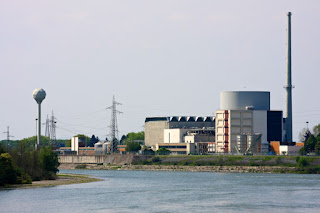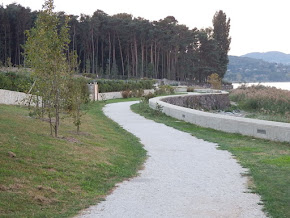Facility based on pioneer Enrico Fermi’s historic Chicago-Pile series
The first nuclear reactor to be built on Italian soil was inaugurated on this day in 1959 at Ispra, a small town on the eastern shore of Lago Maggiore.
The Ispra-1 reactor was the first nuclear
reactor to be built on Italian soil
The facility, which preceded the first generation of nuclear power plants serving the need for clean, reliable and plentiful electricity sources for industrial and domestic use, was built purely for research purposes.
It was opened four years ahead of the country’s first commercial nuclear plant, at Latina in Lazio.
The 5 megawatt Ispra-1 research reactor, as it was titled, was modelled on the latest version of the Chicago-Pile 5 series developed by Enrico Fermi, the Rome-born nuclear physicist who created the world’s first nuclear reactor, the Chicago-Pile 1, following his discovery that if uranium neutrons were emitted into fissioning uranium, they could split other uranium atoms, setting off a chain reaction that would release enormous amounts of energy.
The Ispra-1 reactor was built by Italy’s National Nuclear Research Council. It was officially transferred to the European Community in March 1961, becoming a Joint Research Centre (JRC) of the European Commission.
It was used for studies and research on core physics, new materials for the construction of nuclear power reactors, as well as neutron fluxes and their interaction with living matter.
Until the 1960s, much of Italy’s electricity had been generated from renewable sources. Although the first power plant in continental Europe, opened in Milan in 1883, was carbon-fuelled, the country’s abundance of mountains and lakes enabled it to develop a huge hydroelectric power sector.
 |
| The Trino Vercellese nuclear plant was named after the Italian nuclear pioneer Enrico Fermi |
By 1964, three nuclear power plants had been built, all approximately 50km (31 miles) from major cities. They were at Trino Vercellese, north of Turin, at Sessa Aurunca in Campania, north of Naples, and at Latina, south of Rome.
Yet after the electricity sector in Italy was nationalised in 1962, investment in nuclear stalled. It was not until 1978 that a fourth nuclear power station, at Caorso in Emilia-Romagna, was completed. The 1973 world oil crisis had prompted another round of enthusiastic plans for the nuclear sector, but again they were ultimately downgraded.
The most significant setback of all followed the Chernobyl disaster of 1986, fallout from which affected parts of northern Italy and was blamed for a decline in birth rate in 1987. The Italian government organised a referendum to gauge public feeling about the future of nuclear power, the results of which led to a decision to close two plants and terminate work on another.
Another referendum in 2011 following a nuclear accident in Japan confirmed that public opinion had not shifted and a new company was created to take charge of decommissioning all nuclear sites in Italy, including the research facility at Ispra.
Latina, where one of Italy’s now-decommissioned nuclear power stations was opened in 1963, is a city built during the Fascist era of the 1920s and 1930s when Mussolini’s government fulfilled a pledge to drain the inhospitable, mosquito-ridden Pontine Marshes, visitors to which frequently became infected with malaria. Built on that reclaimed land, and originally called Littoria when it was established in 1932, its stands as a monument to the architectural style that typified the era, which combined some elements of classicism, with its preponderance of columns and arches, with the stark lines of 1920s and 30s rationalism. It has a large number of monuments and edifices, including a town hall with a tall clock tower and a cathedral, designed by architects such as Marcello Piacentini and Angiolo Mazzoni. Renamed Latina in 1946, it has grown into a substantial city with a population of 126,000, making it the second largest city in Lazio after Rome.
Travel tip:
Ispra's coastal pathways are popular with
visitors to the Lago Maggiore town
Ispra, which sits on the eastern shore of Lago Maggiore about 25km (16 miles) west of its provincial capital, Varese, is an area popular with walkers for its lakeside footpaths, including the poetically named passeggiata dell’amore, and with golfers for the Parco del Golfo della Quassa. The Joint Research Centre still exists, despite the decommissioning of the nuclear plant. It comprises the Institute for the Protection and the Security of the Citizen (IPSC), the Institute for Environment and Sustainability (IES) and the Institute for Health and Consumer Protection (IHCP). The site itself is an area of natural preservation, covering an area of 157 hectares (390 acres) of pine, birch, oak and chestnut trees.
Also on this day:
1446: The death of architect Filippo Brunelleschi
1452: The birth of Renaissance genius Leonardo da Vinci
1754: The death of mathematician Jacopo Riccati
1882: The birth of anti-Fascist politician Giovanni Amendola
.jpg)
No comments:
Post a Comment